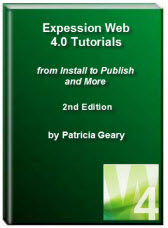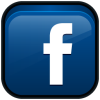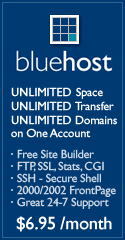- Home
- Expression Web Tutorials
- Installing Expression Web 4
- Setting Up Expression Web 4.0
- Create New Website
- Create a Blank Web Page
- Create a Webpage Layout
- Adding Horizontal Top Navigation
- Adding Vertical Navigation
- Validating Your Pages
- Creating an Expression Web Dynamic Web Template
- Publishing Your Web Site
- How to back up your local website on your hard drive
- SEO Checker and Report
- Adding Insert Include Code into Code Snippets
- Auto Thumbnail in Expression Web
- Broken Dynamic Web Templates and hidden metadata files
- Code Snippets in Expression Web
- Compatibility Checker on Status Bar in Expression Web
- Create and Style a Data Table
- Creating a New Font Family Group
- Creating a New Page from Hyperlink Properties
- Creating web site from site templates in Expression Web
- CSS Properties panel
- Expression Web Preview in Browser
- Expression Web and Design Time Includes
- How to back up your local website on your hard drive
- How to create a Personal Web Package
- Import Site Wizard in Expression Web
- Importing your folders/files into Expression Web
- Inserting Images in Expression Web
- Interactive Buttons in Expression Web
- Migrating a FrontPage Site to Expression Web
- Modify Style Dialog Box
- New Style Dialog Box
- Publishing Your Website from the Remote Server with FrontPage Server Extensions
- Editing Reusable Forms
- Troubleshooting Image Problems in Expression Web
- Validation Error - no attribute "xmlns:v"
- Web Album Generator and Expression Web
- What are all the style# in my page?
- Zoom Search and Expression Web
- Working With Left Border Background Images
- Resources
- Templates
- Web Design Tutorials
- Accessible Forms
- Add a Search Box
- Adding Google Search
- Accessible Data and Layout Tables
- Responsive Tables
- Anchor Tags and Name Attributes
- Best Font Size for Web Design?
- Center Page in Browser Window
- HTML Lists
- How to create and extract a Zip File in Windows
- How to Create a Self-Extracting Zip File
- Validation Error - no attribute "xmlns:v"
- Working With Left Border Background Images
- Handle Background Transparency in Snagit Editor Like You Would in Photoshop
- Bluehost Tutorials
- Add-on Domains at BlueHost
- BlueHost 301 Redirects
- BlueHost Webmail
- Customizing BlueHost Error Pages
- How to make a subfolder the main folder for your BlueHost main domain
- How to change the Primary Domain
- Installing a WordPress Blog Using Simple Scripts
- Mannaging SSL on BH
- Password Protecting Directories and/or Files with Bluehost
- Server Side Includes, BlueHost, and Expression Web
- Expression Web Addins

Working with CSS
I would encourage any of you who are going to use Expression Web to learn at least the basics of working with cascading style sheets or CSS for short. Listed below are just a few of the resources I have found helpful.
Resources
- CSS Basics - written by Ben Partch - an eighteen chapter book you can either download in pdf format or print.
- Working with CSS
- CSSDog Tutorials
- Sitepoint CSS Reference
- Cascading Style Sheets: Separating Content from Presentation - Owen Briggs, Steven Champeon, Eric Costello, and Matt Patterson
- CSS Tutorial from W3Schools
- Introduction to CSS
- CSS and images
- CSS in webpages
- CSS Play
CSS Tab
If you followed Tina Clarke's Setting Up Expression Web EBook for your version of Expression Web, your CSS Tab under Page Editor Options will look like the screenshot below. You might want to also go back and read again that section of the Setting Up EBook.

Figure 1: Page Editor Options CSS tab
Click for larger image
If you are used to using the Formatting Toolbar to create your style, DON'T! If you do the nice clean code from your template will not be clean for long. You will need to retrain yourself to a new way of doing things. If you work in Split View, you can observe how Expression Web writes the styles and, you can learn to make your own styles and transfer them to your external Style Sheet. Working using the Split View Tab, you will be able to see what happens when you are working in Design View and what the effects might be of what you do.
EXAMPLE: I inserted the graphic for the screenshot above along with a hyperlink to a larger image. Expression Web created a style block in the head section with the following style
.style1 { border-width: 0px; }
and added the following to the image tag class="style1" Doesn't tell you much does it? What this does is keep the image, which is a hyperlink from having an ugly blue border around it. So one style rule I include in all of my external style sheet is the following style:
body img { border: 0px; text-decoration: none; }
That style will keep any image from having that blue border if hyperlinked. It would NOT have been created if the style sheet had been attached to the page before I started creating the content.
If you find code littered with style1 style2 etc TURN OFF the Formatting bar and or the Common Toolbar, it's easy to do and easy to TURN BACK ON.
EW 4.0 - View > Toolbars > un-tick the Formatting and/or Common Toolbars or right click on a grey area of the toolbars and un-tick the Formatting and/or Common Toolbars.
Managing Styles
Open the default template you have chosen to work with for your site. Two of the Task Panes/Panels you will need to work with styles are Apply Styles and Manage Styles. I dock them on the left side of my screen but you will need to decide what works for you.
Manage Styles Task Panel/Pane
With the DWT on the screen, you will see in the Manage Styles Task Pane/Panel, a listing of the styles used with that template and a preview of the one selected at the bottom. Each of the default templates use two separate style sheets, layout.css and styles1.css. The number will depend on which of the style sheets you selected for the site.
The Manage Styles task pane/panel enables you to apply, modify, rename, and delete styles; attach or detach external cascading style sheets (CSS); select all instances of a style; and go to the code that contains a style's rule set. You can also use the Manage Styles task pane/panel to move styles from an external CSS to an internal CSS and vice versa, or to move the location of a style within in a CSS.
View Screenshot of the Manage Style Task Panel
Apply Styles Task Panel/Pane
The Apply Styles task pane/panel enables you to apply, remove, modify, rename, and delete styles; attach or detach external cascading style sheets (CSS); select all instances of a style; and go to the code that contains a style's rule set. The Apply Styles task pane/panel displays each style according to the rules of the style, so you can quickly identify the style you want to work with just by looking at the style's visual appearance.
When you open a web page, the Apply Styles task pane/panel lists styles that are defined in all of the page's cascading style sheets (CSS), including external, inline, and internal CSS. Class and ID selectors appear under either the name of the external .css file that contains the style or Current Page if the style is in an internal CSS. Element selectors are organized the same way but appear under a separate heading named Contextual Selectors below the list of class and ID selectors. You can set the task pane to list all styles or restrict it to list only styles that are used in the current web page or the current selection in the page. No matter which of these options you've selected, element selectors and inline selectors appear in the task pane only when you either place your cursor in content that uses the style or select content that uses the style.
You can sort the list of styles that appear in the Apply Styles task pane/panel and also restrict the list to show only styles that are used in the current web page or on the current selection. If a particular style is difficult to see against the white background of the task pane, you can select a color to appear in the task pane behind styles that don't contain a background property.
View Screenshot of the Apply Styles Task Panel
The styles shown in the screenshots and the rest of this set of tutorials will use the Organization 3 default template that comes with Expression Web.
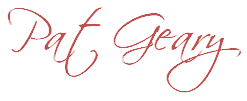
Copyright © Pat Geary of Expression Web Tutorials and Templates
Written May 2010
Expression Web 4.0 Tutorials 2nd Edition from Install to Publish, a FREE EBook by Pat Geary.
Expression Web has a group on Facebook. If you are a FB user, come join us.
Disclosure: This is an affiliate link, which means that if you visit Bluehost.com through this link and purchase this product, I’ll get a commission.
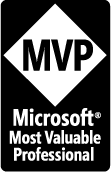
April 2007 - April 2013
Privacy Policy | Migrating from FrontPage to Expression Web
Microsoft® and Expression Web® are registered trademarks of Microsoft® Corporation.
Site Design & Maintenance : Expression Web Tutorials & Templates
